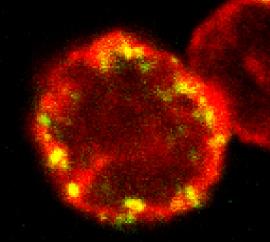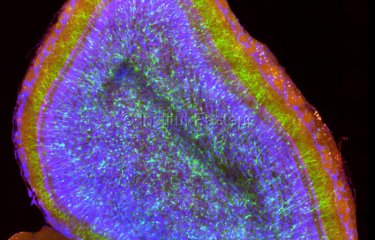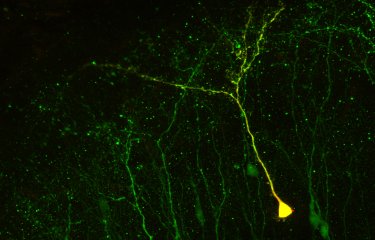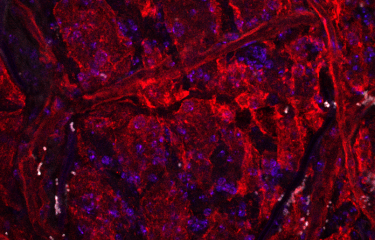Researchers from the Institut Pasteur and the CNRS, in collaboration with Inserm and the Université Paris Diderot, have demonstrated the role an inflammatory reaction plays in the development of cerebral malaria in mice. Cerebral malaria is one of the most severe forms of malaria primarily affecting young children. If confirmed in humans, this discovery would pave the way for new therapeutic developments to help prevent this disease. This study was recently published online by the Journal of Experimental Medicine.
Press release
Paris, october 3, 2011

A study conducted by researchers from the Institut Pasteur and the CNRS, in collaboration with Inserm and the Université Paris Diderot, examined cerebral malaria in brains with poorly controlled immune responses. Led by Salaheddine Mécheri of Institut Pasteur’s Biology of Host-Parasite Interactions unit, the team's work demonstrated that the development of cerebral malaria is not directly caused by the parasite developing inside the red blood cell but rather originates from an allergy-like mechanism causing inflammation.
In mice models that mimic the human disease, researchers showed that the parasite induced the production of an antibody receptor for immunoglobulin E (IgE), essential for the allergic reaction, on specific types of white blood cells, called neutrophils. Neutrophils are immune system cells that generally lack this type of receptor. The induced IgE/receptor complex triggers a series of inflammatory reactions that cause cerebral malaria.
Researchers confirmed this result by issuing receptor-bearing neutrophils to mice with neutrophils lacking this receptor. Using this method they were able to prove that the formation of an IgE/receptor pair is essential for the development of this disease.
This study sheds new light on the way experimental cerebral malaria is understood. Researchers are now focusing on identifying whether or not these neutrophils and the described mechanisms are present in humans, a finding that would be an important step towards a potential therapeutic target. Anti-allergy treatments directed against IgE receptors to prevent allergic reactions in certain individuals could then be used as a preventive treatment against cerebral malaria.
--
Photo - © Institut Pasteur
"Receptor components with a high affinity for IgE (green, red, and yellow) on the surface of a neutrophil in a mouse infected by the Plasmodium parasite"
Source
Critical role of the neutrophil-associated high affinity receptor for IgE in the pathogenesis of experimental cerebral malaria, Journal of Experimental Medicine, published online October 3, 2011
Adeline Porcherie (1), Cedric Mathieu (1), Roger Peronet (1), Elke Schneider (2), Julien Claver (3,4), Pierre-Henri Commere (5), Hélène Kiefer-Biasizzo (5), Hajime Karasuyama (6), Geneviève Milon (7), Michel Dy (2), Jean-Pierre Kinet (8), Jacques Louis (1), Ulrich Blank (3,4), Salaheddine Mécheri (1)
1 Institut Pasteur, Unité de biologie des interactions hôte-parasites, F-75015 Paris, France
2 CNRS, UMR8147, Hopital Necker, F-75015 Paris, France
3 INSERM U699, Paris, F-75018, France
4 Université Paris Diderot, UMR-S699, Faculté de Médecine
6 Tokyo Medical and Dental University, Tokyo, Japan
7 Institut Pasteur, Unité d’Immunophysiologie et Parasitisme Intracellulaire, F-75015 Paris, France
8 Department of Pathology, Beth Israel Deaconess Medical Center, Boston, MA, USA
Contacts
Institut Pasteur Press Office
Nadine Peyrolo – +33 (0)1 45 68 81 47
Sabine D'Andrea – +33 (0)1 44 38 92 17
presse@pasteur.fr








